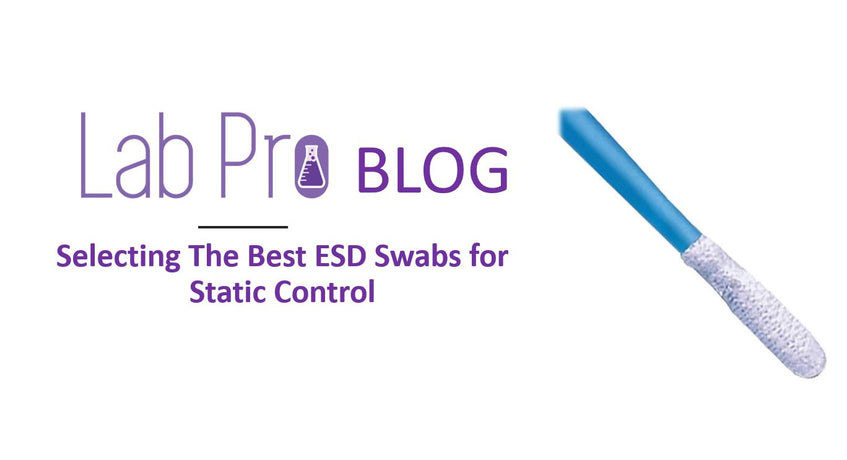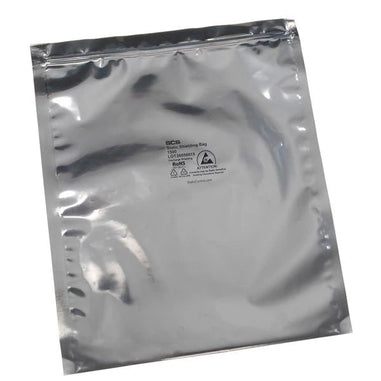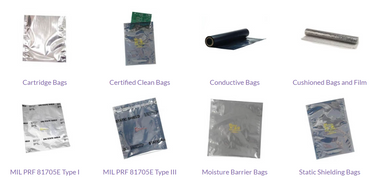- No products in the cart.
Swabs are no longer just cotton on the end of a stick. They have evolved into very sophisticated lab precision tools carefully designed for specific tasks. Today, lab swabs are made with high-tech material all the way from their tips right down to their handles.
Tip Significance
Every part of the swab is designed for a specific purpose. When it comes to the tip, the shape and material will dictate how well the swab does its job based on the task it needs to perform. Every swab tip has its own unique qualities.
Some swabs are made with cotton tips making them the least expensive and one of the most absorbent swabs. However, cotton can shed and leave behind fibers which make it undesirable for certain tasks.

Open celled polyurethane swabs are an upgrade from cotton but don’t hold up to harsh solvents. They are super absorbent, tough, ideal for use with alcohol, and don’t leave behind fibers. The open cells provide great particle entrapment due to its material structure.
A closed-cell polyurethane or knitted polyester tip is ideal for scrubbing tough residue around a PCB component since it has the most rugged tip and is resistant to solvents. This warrants more of a discussion of swabs for electronic devices, printed circuit boards or PCBs, and static control.
Swabs For Static Control
Electronic devices and PCBs have circuits that can easily be damaged. The damage is caused by ESD or electrostatic discharge. This static field is caused by the material of the swab rubbing the surface and causing material to become electrically charged. This electrical charge can cause damage to the device even to the point where the device can become inoperable.
ESD damage can be controlled and avoided by using a swab with a certain type of handle. The static dissipative handle slowly drains the static charge field so that there is a minimal risk of damage.
What Is Electrostatic Discharge?
ESD is caused by static electricity and the process of tribocharging. This occurs when two materials with different charges come close to each other or make contact and then separate causing transference of electrical potential. This electrical potential can vary in a wide range of electrical intensity.
Some ESD events will cause sparking while others aren’t visible such as when working on sensitive electronic components. Even though the ESD event may not be visible, it doesn’t mean that damage hasn’t occurred to the component. The damage may occur immediately or over a short term which will shorten the lifespan of the device. Thankfully, ESD can be controlled through the use of ESD static control swabs with specifically designed handles.
Handle Significance
Swab handles can be made of plastic, paper, wood, or metal. Just as tips are designed with their own unique qualities, handles are designed for specific purposes as well.
Longer handles are designed for hard-to-reach areas and sampling and shorter handles are designed for cleaning and detailed work. Sturdy handles are designed for scrubbing while less sturdy handles are designed for sampling.
Not only are handles designed for grip, strength, stiffness, flexibility, or chemical resistance based on the qualities needed for the task at hand but there are also handles that are designed for static control.
Different Types Of ESD-Safe Handles
There are different types of ESD-safe or static control swab handles. These include black ESD-safe swab handles, clear and cloudy translucent ESD-safe swab handles, and blue translucent ESD-safe swab handles. The different handles all have their advantages and disadvantages.
The black ESD-safe swab handles are usually made out of polypropylene and soaked with a conductive black carbon pigment. This material dissipates the static charge but can leave behind a grey or black mark which can ultimately cause electrical problems.
The clear and cloudy translucent ESD-safe swab handles are typically made out of acrylic. However, the acrylic can partially dissolve, swell, soften, and become sticky with aggressive solvents.
Blue translucent ESD-safe swab handles are made of polypropylene. The polypropylene will dissipate the static charge and hold up to aggressive solvents.
Conclusion
In order to prevent and control electrostatic discharge, the goal is to try and create a static-free environment. ESD-safe swabs can reduce the risk of this potentially damaging discharge. This reduction in risk is accomplished through the material used to make the swab, in particularly the handle. The clear and cloudy translucent ESD-safe swab handles work well to dissipate static charge as long as they are not being used with aggressive solvents. The blue translucent ESD-safe swab handles work well with aggressive solvents.
Lab Pro offers a large variety of swabs for all types of applications. For over 40 years, Lab Pro Inc. has been committed to delivering the highest quality chemicals, lab equipment, distance learning kits, lab supplies, and cleanroom PPE apparel to medical device companies and laboratories worldwide. To learn more, visit the biggest Lab Supply showroom in California, or contact us online or at 888-452-2776.












































